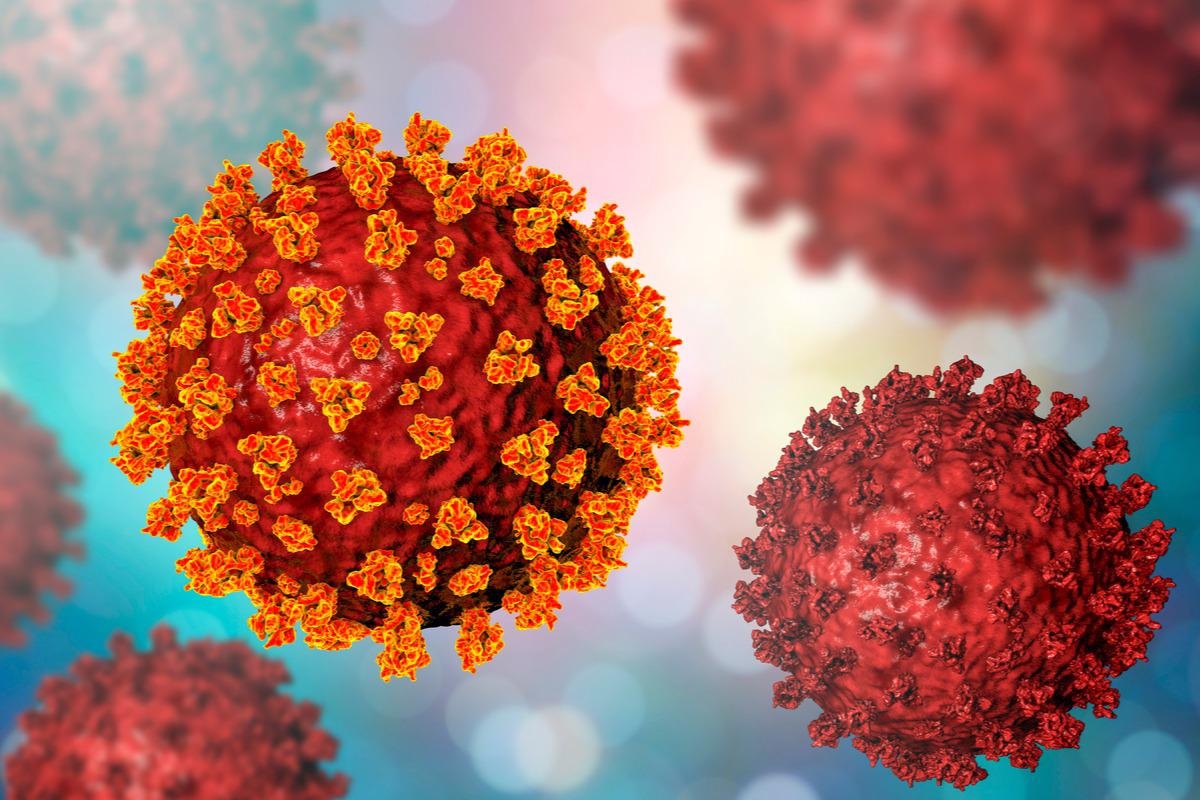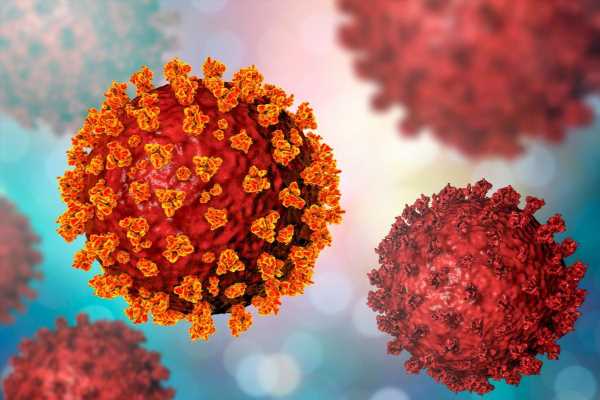In a recent study posted to the bioRxiv* pre-print server, researchers examined the role of sialic acid-binding immunoglobulin-type lectins-1 (CD169), a myeloid cell-specific receptor, in facilitating severe acute respiratory syndrome coronavirus 2 (SARS-CoV-2) infection of angiotensin-converting enzyme 2 (ACE2)-deficient macrophages and its effect on pro-inflammatory cytokine expression.

Background
The monocytes and macrophages, including tissue-resident alveolar macrophages, have not been directly associated with productive SARS-CoV-2 infection as they do not express ACE2; however, studies have reported the presence of SARS-CoV-2 ribonucleic acid (RNA) and antigen in these cells.
The aberrant activation of these cells in severe coronavirus disease 2019 (COVID-19) robustly induces interferon-stimulated gene (ISG) expression and high levels of pro-inflammatory cytokines, including interleukin 6 (IL-6), tumor necrosis factor α (TNFα), and IL-1β, all potential drivers of acute respiratory distress syndrome (ARDS).
Studies on post-mortem tissues from deceased COVID-19 patients have shown tissue-resident alveolar macrophages and inflammatory myeloid cell populations enriched with SARS-CoV-2 RNA. However, studies have barely investigated whether SARS-CoV-2 can establish a productive infection in monocytes and macrophages and the molecular mechanisms contributing to the myeloid cell-intrinsic hyperinflammatory phenotype.
Some recent reports demonstrated that dendritic cell (DC)-mediated SARS-CoV-2 trans infection of ACE2+ epithelial cells was facilitated by CD169 as it binds to highly sialylated SARS-CoV-2 spike (S) protein.
About the study
In the present study, researchers showed that CD169 binds to the SARS-CoV-2 S and mediates SARS-CoV-2 entry into macrophages even in the absence of ACE2, leading to restricted cytosolic expression of viral genomic and sub-genomic (sg) RNA.
They used two different human macrophage models, phorbol 12-myristate 13-acetate (PMA)-differentiated human leukemia monocytic cell line (THP1) cells (THP1/PMA), and monocyte-derived macrophages (MDMs).
They cultured CD14+ monocytes in the presence of human AB-serum and macrophage colony-stimulating factor (M-CSF) for six days to obtain differentiated primary MDMs, with ACE2 expression under the detection limit. They infected these cells with a SARS-CoV-2 S-pseudotyped lentivirus. Further, they incubated THP1 cells stably expressing wildtype (wt) CD169, mutant CD169 (R116A), or both wt CD169 and ACE2 with recombinant SARS-CoV-2 S protein and used flow cytometry (FC) to observe the relative S binding.
Study findings
The FC analysis showed a significantly reduced S binding in THP1/CD169-R116A cells, indicating that CD169 recognizes the sialylated S protein. Co-expression of the CD169 and ACE2 in THP1 cells enhanced S-pseudotyped lentiviral infection by greater than 11-fold and three-fold compared to cells only expressing CD169 or ACE2, respectively, suggesting a cooperative binding of CD169 and ACE2 to SARS-CoV-2 S. Furthermore, these results reinforced that the CD169-S interaction alone is enough to promote SARS-CoV-2 entry and fusion in macrophages in an ACE2-independent manner.
The authors observed a marked attenuation in the S-pseudotyped lentiviral infection in CD169+ macrophages upon treatment with the N-terminal domain (NTD)-targeting antibodies, suggesting that the CD169-S interaction facilitates SARS-CoV-2 entry in a manner distinct from ACE2. Accordingly, the results have implications for antibody treatment for COVID-19 patients, as current therapies primarily focus on the receptor-binding domain (RBD)-targeting antibodies. However, the NTD-targeting neutralizing antibodies blocking ACE2-dependent and ACE2-independent entry might also potently suppress myeloid/macrophage-intrinsic inflammatory signature.
In THP1/PMA macrophages, the authors observed that the CD169-mediated SARS-CoV-2 entry was as effective as that mediated by ACE2. Consequently, there were no significant differences in the guide RNA (gRNA) levels at early times (up to six hours post-infection (hpi)) between CD169+, ACE2+ or CD169+/ACE2+ THP1/PMA macrophages, suggesting the absence of any restrictions to the initial steps of SARS-CoV-2 replication, such as attachment and fusion, in CD169+ THP1/PMA macrophages.
SARS-CoV-2 RNA synthesis occurs within the endoplasmic reticulum (ER)-derived double-membrane vesicles (DMVs). The authors observed fewer double-stranded RNA (dsRNA) in the SARS-CoV-2 S-pseudotyped lentivirus-infected CD169+ macrophages, likely reflecting the selective impairment of the formation of DMVs and in turn SARS-CoV-2 RNA. However, upon restoring the ACE2 expression in the THP-1/PMA and primary MDMs, they started infectious SARS-CoV-2 production, suggesting that the macrophages were permissive to viral replication in an ACE2-dependent manner.
Interestingly, clinical treatment with remdesivir (RDV) blocked de novo SARS-CoV-2 RNA expression and significantly reduced the pro-inflammatory cytokine expression in non-productively infected CD169+ macrophages. This finding suggested that the newly synthesized SARS-CoV-2 RNAs viz., negative sense gRNA, dsRNA, and sgRNAs are key drivers of innate immune activations in the macrophages, not the S protein interaction with ACE2. This discovery presents a novel therapeutic strategy for combating hyper inflammation in COVID-19 patients.
Conclusions
Although CD169 facilitated SARS-CoV-2 entry in the macrophages and monocytes in an ACE-2 independent manner and enhanced the kinetics of SARS-CoV-2 replication and magnitude of infection even during the ACE2-mediated entry, its molecular mechanism remains unclear. Nevertheless, the study highlighted a post-entry role of ACE2 in the SARS-CoV-2 life cycle in the macrophages.
Future studies should further explore the ACE2-independent CD169-mediated mechanism of SARS-CoV-2 entry in the macrophages resulting in the hyperactivated immune response during SARS-CoV-2 infection for providing insights into the molecular-level post-entry restrictions on viral replication and the viral determinants that trigger the innate immune activation.
*Important notice
bioRxiv publishes preliminary scientific reports that are not peer-reviewed and, therefore, should not be regarded as conclusive, guide clinical practice/health-related behavior, or treated as established information.
- Sallieu Jalloh, Judith Olejnik, Jacob Berrigan, Annuurun Nisa, Ellen L Suder, Hisashi Akiyama, Maohua Lei, Sanjay Tyagi, Yuri Bushkin, Elke Muhlberger, Suryaram Gummuluru. (2022). CD169-mediated restrictive SARS-CoV-2 infection of macrophages induces pro-inflammatory responses. bioRxiv. doi: https://doi.org/10.1101/2022.03.29.486190 https://www.biorxiv.org/content/10.1101/2022.03.29.486190v2
Posted in: Medical Science News | Disease/Infection News | Healthcare News
Tags: ACE2, Acute Respiratory Distress Syndrome, Angiotensin, Angiotensin-Converting Enzyme 2, Antibodies, Antibody, Antigen, Cell, Cell Line, Coronavirus, Coronavirus Disease COVID-19, covid-19, Cytokine, Cytokines, Cytometry, Enzyme, Flow Cytometry, Gene, Genomic, Immune Response, Immunoglobulin, Inflammation, Interferon, Interleukin, Lentivirus, Leukemia, Macrophage, Membrane, Monocyte, Necrosis, Phenotype, Protein, Receptor, Remdesivir, Respiratory, Ribonucleic Acid, RNA, SARS, SARS-CoV-2, Severe Acute Respiratory, Severe Acute Respiratory Syndrome, Syndrome, TNFα, Tumor, Tumor Necrosis Factor

Written by
Neha Mathur
Neha is a digital marketing professional based in Gurugram, India. She has a Master’s degree from the University of Rajasthan with a specialization in Biotechnology in 2008. She has experience in pre-clinical research as part of her research project in The Department of Toxicology at the prestigious Central Drug Research Institute (CDRI), Lucknow, India. She also holds a certification in C++ programming.
Source: Read Full Article
